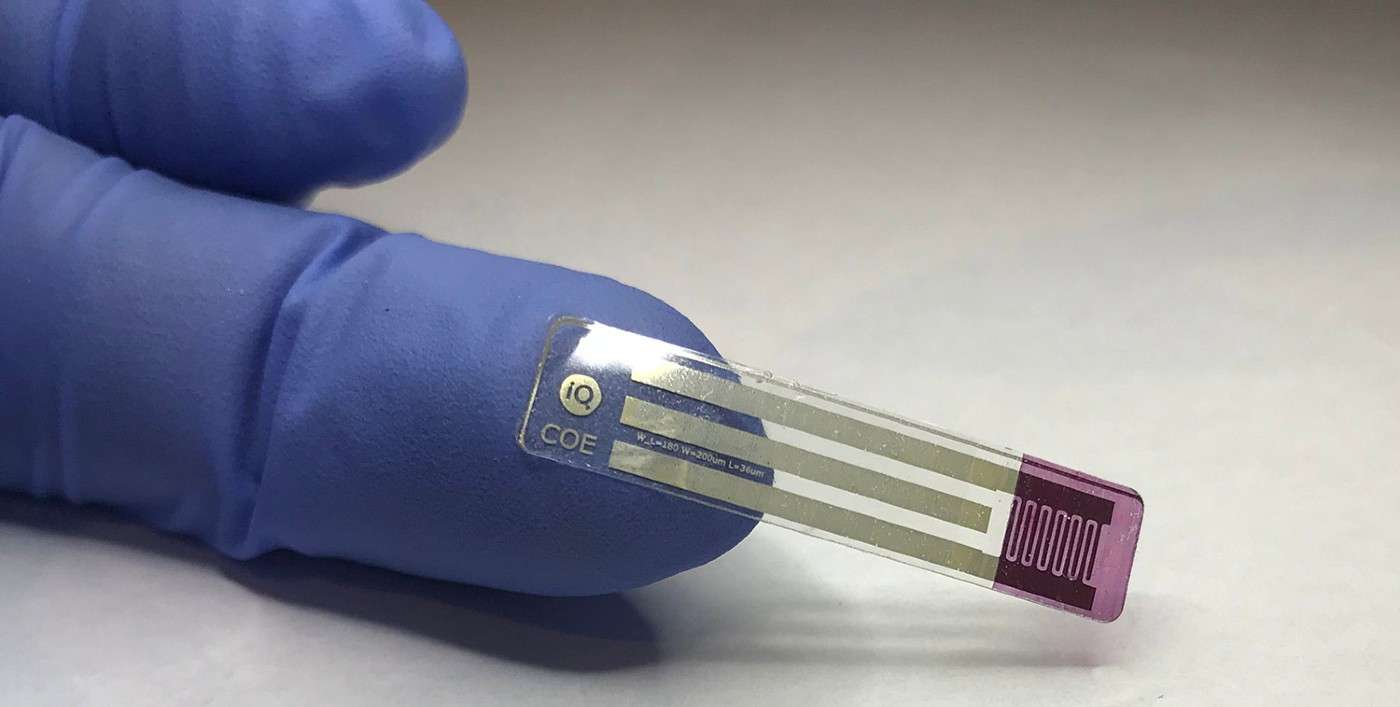Korea is Using Artificial Intelligence to Prevent Suicide Attempts on Bridges
On Seoul's 27 bridges, new CCTV cameras will analyze body movements to try and detect suicides before they happen and alert rescue teams.

A world-first, pain-free diabetes test could soon be in the hands of consumers following $6.3 million in funding to establish the first manufacturing facility for the device.
Funded by the Australian Government's Modern Manufacturing Initiative, the world-class facility will help transition two decades of lab research to retail shelves to benefit more than 460 million people living with diabetes globally.
University of Newcastle physicist and research leader, Professor Paul Dastoor said the first devices are due to roll off the production line by 2023.
For patients afflicted with diabetes, who have up till now had to finger prick multiple times a day in order to monitor their glucose levels, this grant could not have come at a more appropriate time.
The saliva test makes painful finger-prick testing for type 1 and type 2 diabetes obsolete, representing the first major innovation since the blood glucose test was developed in the 1960s.
Professor Dastoor attributes this, in part, to inspiration from his wife, who as a primary school teacher helped young children in her care to monitor their blood glucose levels.
"It's a heartbreaking scenario when the lunch bell rings and everyone runs to the playground, bar an unfortunate few who stay back to surrender their finger for blood testing at every meal time," Professor Dastoor said.
"Our vision was to create a world where no one needs to bleed in order to eat."
With saliva glucose concentrations 100 times lower than in blood, this was easier said than done.
"One of our key challenges was the sheer unavailability of glucose in saliva. It exists in minute concentrations, so you need to develop an incredibly powerful platform to detect it. Saliva also contains a plethora of other substances, so you've then got to tune out a lot of ‘noise' to ensure results are accurate," Professor Dastoor said.
Professor Dastoor said the sensor, similar in size to a stick of chewing gum and considerably thinner, was incredibly powerful, detecting substances that exist in saliva in minute concentrations.
"With this highly sensitive platform, we can now detect glucose at the levels found in saliva, for the first time," he explained.
Coated with a natural enzyme—Glucose Oxidase—the biosensor interacts with saliva, producing a reaction that generates an electrical current. This current can be detected and measured to reveal highly accurate glucose levels which could be delivered via a smartphone app and the data stored in the cloud.
Professor Dastoor said the sensor could be developed for application across 130 indications including tumour markers, hormones, and allergens.
"The biosensor is a ‘platform technology', which means it will be widely applicable to detect a variety of substances that identify a range of diseases. We're already looking for the substances that identify cancer, hormones and allergies," he explained.
The sensor could also help with new diagnostic tests urgently needed to help eradicate COVID-19. (His team are partnering with the Wyss Institute for Biologically Inspired Engineering at Harvard University to help develop the sensor platform as a non-invasive COVID test.)
"The Wyss Institute have developed a clever antifouling coating that can be incorporated into the biosensor platform, offering a new diagnostic tool for COVID-19 that can be printed onto plastic strips at massive scale."
"To see the biosensor on shelves, changing lives will be immensely satisfying, it's why we do the work we do," Professor Dastoor said of this next step for his team's breakthrough technology.
(WATCH the University of Newcastle video for this story below.)
Source: University of Newcastle Australia
SHARE This World-First Test With Friends on Social Media…
Be the first to comment